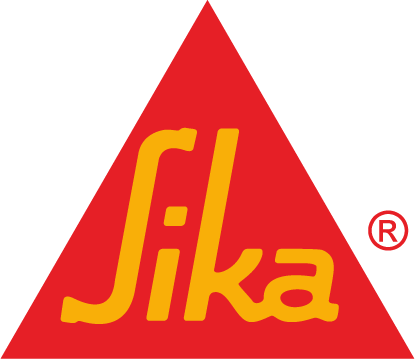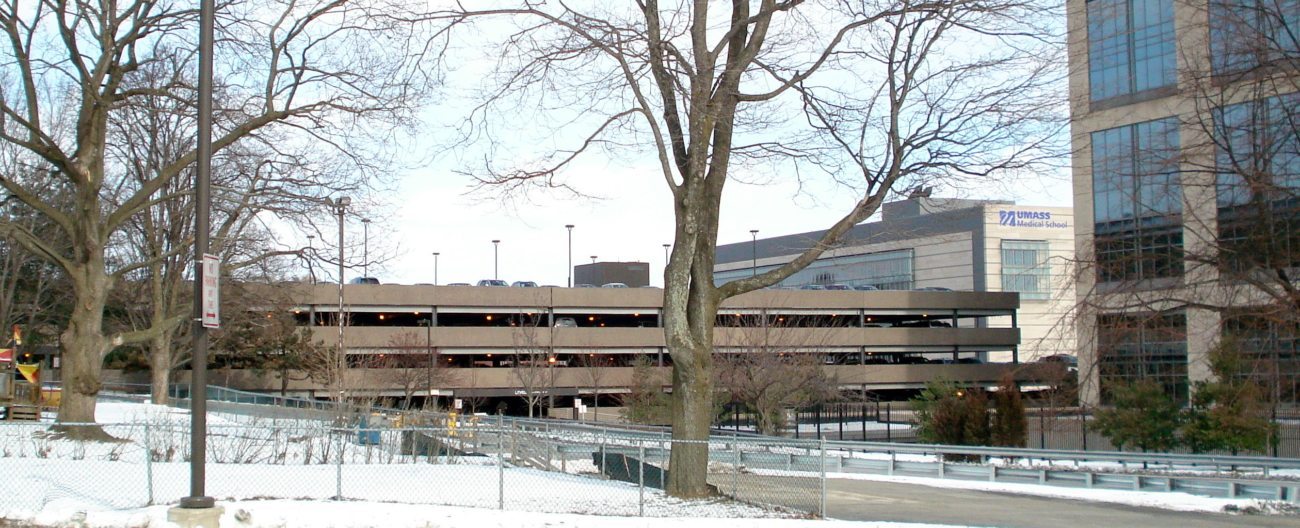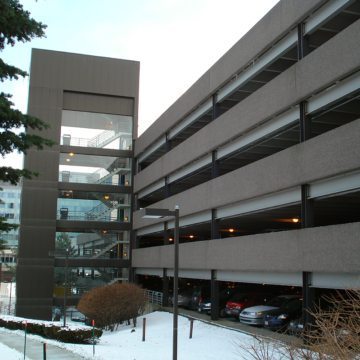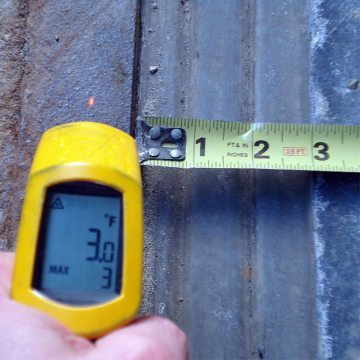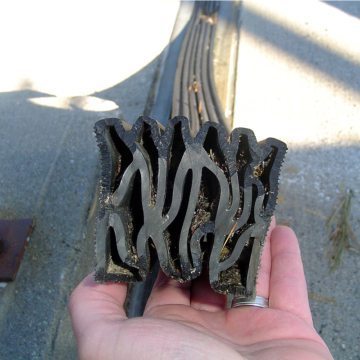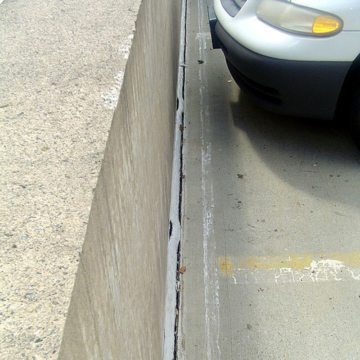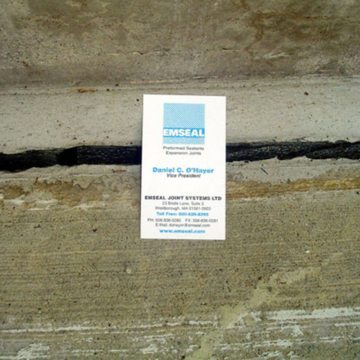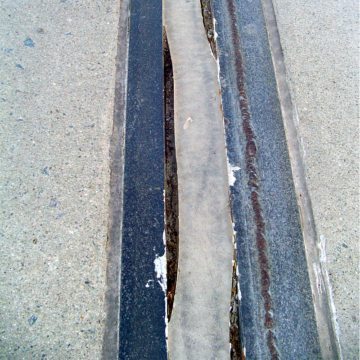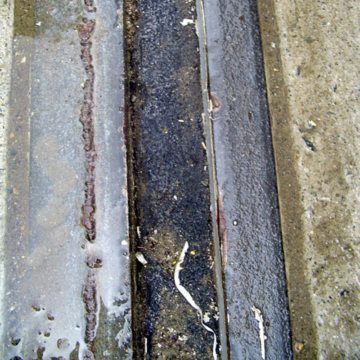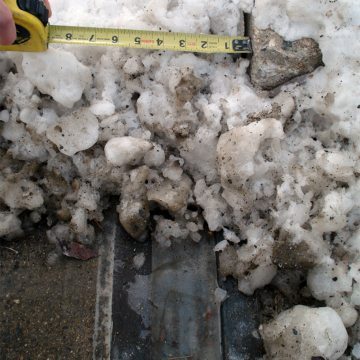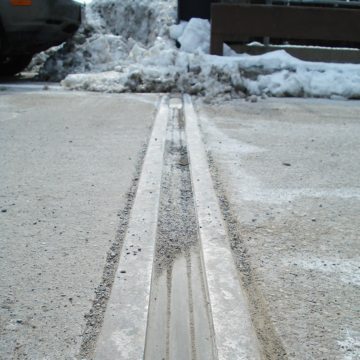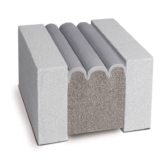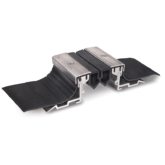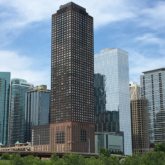UMASS Medical Center Parking, Worcester
Massachusetts
Date: 2007, 2016, 2019
After Several Unsuccessful Treatments, UMASS Medical Parking Garage Gets Sika Emseal DSM System Expansion Joint Remedy
WORCESTER, MA–With a wind chill of -20ºF (-28ºC), the parking deck on the slope of the Lake Quinsigamond valley was frigid. A substrate thermometer showed 3ºF (-16ºC) on the embedded metal angle substrates. Yet Sika Emseal’s DSM System in the joint opening was firmly bonded, pliant, and holding up well under the harsh top-deck environment.
While it remains, in general, best to remove metal angles from joint edges, there are times when budgets simply will not allow it. This means that owners while understanding the risks involved in leaving the angles in the joint edge, still want an expansion joint sealant that will be watertight, handle the movements expected on the deck, and will do this while being mounted to the faces of the steel angles.
Joint-face adhered systems as a rule suffer from the reliance on adhesives in tension. This is, of course, the weakest way to use adhesives.
The original installation in the UMass Medical Employee Parking deck was a compression seal. Compression seals, ironically, suffer from compression-set (the failure of the rubber to recover after repeated compression cycles). This put their oxymoronically-named “lubricating adhesive” into tension. Adhesion in tension is the weakest way to use an adhesive. The bond of the adhesive to the rubber is lost and the seal becomes dislodged and the joint leaks.
Systems that have evolved to use adhesives in shear, like Emseal’s Thermaflex, are not practical where the owner can’t afford the expense of removing and forming blockouts at joint edges.
Attempts to reseal some of the failed joints with liquid sealant and backer rod, were also unsuccessful. Liquid sealant suffers from tensile stresses both at the bond line and with the body of the cured sealant material. This system only has a chance of working when the perfect “hour-glass” geometry is achieved by properly sizing and setting the backer rod just right.
Liquid sealant and backer rod installation has failed both adhesively (at the bond lines) and cohesively (within the body of the sealant).
Braided backer rod is visible below the failed liquid sealant. Braiding backer rod will will prevent the creation of the “hour glass” geometry required for liquid sealant to work and violate the manufacturers’ warranties.
Adhesive in tension is a limiting factor in cold climates for precompressed, impregnated, foam sealant technologies that utilize older asphalt or wax-based compounds in their impregnations. Because asphalt and wax compounds become relatively stiff at cold temperatures and can bleed out at high temperatures.
A test joint using another manufacturer’s wax-compound saturated system was installed in the summer of 2005 instead. This material was incapable of moving in extension at low temperatures, and along with the liquid sealant installed over it, failed adhesively in November of its first winter as the joints began to open up.
The eventual solution to these joints came from an evolution in hybrid silicone and impregnated foam technology, the DSM System from Emseal.
Chosen from Emseal’s complete line of parking deck expansion joint options, DSM System features a unique, hydrophobic acrylic impregnation that is watertight, odorless, clean handling, UV stable, non-staining, low temperature flexible, and high-temperature stable. It is additionally 100% free of wax or wax compounds, asphalt or asphalt compounds.
DSM System from Emseal is custom supplied pre-compressed to smaller than the field-measured joint opening size.
It is removed from its shrink-wrap and hardboard packaging and installed into and with wet epoxy adhesive in accordance with the DSM System installation instructions.
The epoxy is supplied by Emseal as part of the DSM System.
The active backpressure of the impregnated foam backing causes the material gradually to expand.
It is this backpressure that keeps the DSM System lodged firmly against the substrates and, along with the epoxy installation adhesive ensures that the full range of compression and extension movement of the joint is accommodated.
Separation of ice and snow from a curb face shows the additional opening of the joint from freezing point to the extreme low temperature at the time of this site inspection.
Once firmly seated in the joint opening, a liquid-silicone sealant band is injected between the upper edges of the DSM foam and pre-cured silicone bellows.
The silicone is supplied by EMSEAL as part of the DSM System.
The abrasion resistance of the traffic-grade silicone bellows combines with the the resiliency of the cellular-acrylic impregnated foam backing to handle the sand and deicing salts that contribute to the extreme top-deck environment.
The finished installation is aesthetically compatible, continuity of seal through the changes in plane and direction is maintained, and the DSM System assures watertightness, while accommodating joint movement virtually free of tensile stresses at the bond line or within the body of the sealant.
Revenue loss, damaged-vehicle repainting, ice-slicks on decks below, repeated repair expense, and spalling of concrete due to rebar corrosion, are are all consequences and costs of leaks at expansion joints.
Elimination of these problems in new construction as well as in retrofit of existing parking structures is a central focus of Emseal’s.
The company’s unique approach combines innovative materials technologies with a fresh look at the roles of owners, designers, general contractors, manufacturers and subcontractors, in achieving trouble-free expansion joints.
The approach is grounded in a collaborative process centered on joint treatment that requires all of these parties to think, design, detail, specify, construct, fabricate, and install three-dimensional solutions.

